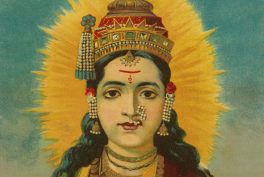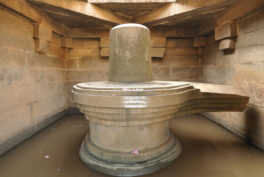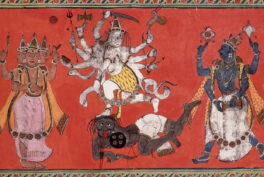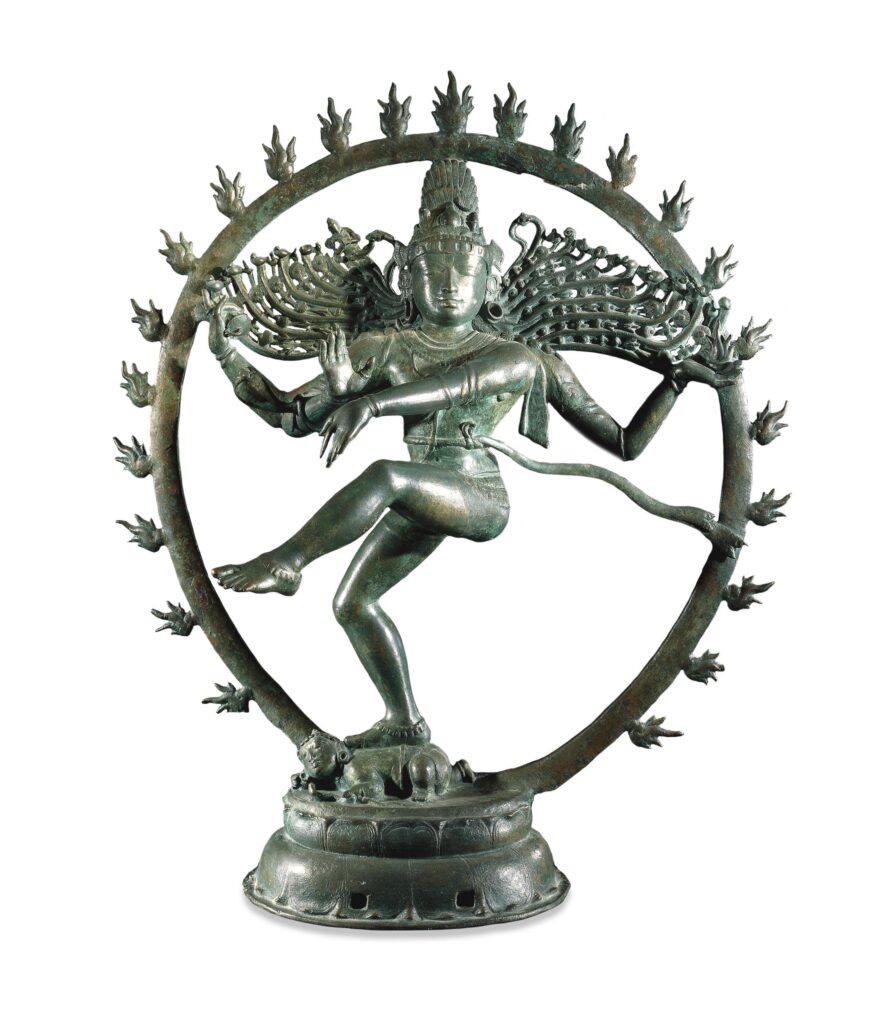This iconic portrayal has captivated artists, scholars, and devotees alike, offering a rich tapestry of symbolism and mythology to unravel. The Chola dynasty notably popularized the form of Nataraja that set the standard for subsequent depictions, although many variations exist across different regions and artistic traditions. The core symbolism of the Nataraja remains universally revered, inviting contemplation on the cosmic dance of destruction and the eternal rhythm of life and death.
The Chola Patronage
The powerful Chola dynasty reigned over a vast expanse of South India from the 9th to the 13th centuries and emerged as important patrons of the Hindu arts, presiding over a golden age of cultural flourishing. Under the Chola patronage, temple construction and Hindu arts thrived, setting the standards for what is now revered as the iconic Dravidian-style architecture. There was a proliferation of Hindu sculptures and statuary during their reign, reflecting profound religious devotion and artistic mastery.
Chola artisans crafted bronze sculptures with unparalleled skill and detail, capturing the dynamic energy and symbolic richness of Shiva’s celestial dance. Nataraja statutory served as revered icons during religious processions. This form became prominent across the Hindu world.
The Origins of Shiva Nataraja
Rajaraja Chola I and his successors played instrumental roles in fostering the prominence of Nataraja as a central deity, elevating the significance of Shiva’s cosmic dance as they regarded Chidambaram Temple as the cosmic stage for Shiva’s Ananda Tandava. The temple serves as a focal point of worship and pilgrimage, further amplifying Nataraja’s divine presence.
Lord of the Dance
In his portrayal as the cosmic dancer, Shiva embodies the divine dance of destruction known as the Tandava, symbolizing the rhythmic cycles of creation and destruction inherent in the eternal flow of energy within the universe. Each attribute of this revered form carries profound significance, encapsulating layers of symbolism that invite contemplation. Every element of Shiva as Nataraja serves as a potent reminder of the divine order and the cyclical nature of existence.
Ring of Fire
The Prabha Mandala, a round or oval ring encircling the Nataraja is a representation of cosmic fire. This is believed to be the primordial energy that causes the destruction and subsequent creation of the universe, illustrating the cyclical nature of existence. While not all representations of Shiva Nataraja include the display of the ring, it remains a frequently present and perhaps the most visually striking identifier of this divine form.
In earlier depictions, the flame within the ring often had three points, but from the 11th and 12th centuries onwards, flames with five points became typical for the Shiva Nataraja image.
Ganga in Shiva’s Jata
Shiva’s matted dreadlocks, known as jata, reflect his role as a yogi and ascetic, a tradition carried out by sadhus or religious ascetics to this day. Symbolizing Shiva’s detachment from worldly attachments, the jata appears in the Nataraja to convey movement, spread around his head to indicate the vigor of his divine dance.
As with many representations of Shiva, the personified river goddess Ganga appears entangled in Shiva’s matted locks.
Cosmic Serpent
Shiva is often depicted with Vasuki, the cobra wrapped around his form. The cobra is representative of kundalini shakti, the cosmic energy that lies dormant within all beings and symbolizes the infinite cycle of time and eternity.
Symbolism of the Hands
Depending on the depictions, Nataraja is typically portrayed with four arms, although some variations may depict him with more. In his upper right hand, Nataraja often holds a small drum known as the damaru, representing the primal sound of creation. His upper left hand holds agni or fire.
One of Shiva’s right hands is often raised in the Abhaya Mudra, a gesture of fearlessness and protection, while his left hand gestures the Gaja Hasta Mudra pointing downward toward his raised left foot. On the Nataraja, it symbolizes the promise of release from ignorance and the bliss of understanding.
Symbolism of the Feet
The uplifted foot of Nataraja symbolizes moksha or liberation, representing freedom from the cycle of birth and death, which is the ultimate goal of Sanatana Dharma. Shiva’s right foot is usually depicted pinning down Apasmara Purusha, a demi-being symbolizing ignorance or avidya.
Contemporary Appeal
Popularized during the Chola dynasty, the depiction of Nataraja continues to inspire artists, philosophers, and spiritual seekers worldwide. Many figures of the Nataraja from the Chola period are on display in museums all over the world, offering a global opportunity for introspection and reflection on its enduring significance. It remains an important and prominent icon of modern-day Hinduism.


















